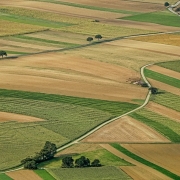Many travelers think of Croatia solely for its stunning seaside and hundreds of idyllic islands, looking inland only as far as Plitvice Lakes or the capital city, Zagreb. The eastern region of Slavonia, including Osijek, are destinations that go unnoticed. A truly big mistake, since Slavonia, and especially Osijek as its main pearl, have a lot to offer.
Table of Contents
A brief history of the Slavonian pearl
The city of Osijek – the fourth largest city in Croatia with a population of 108,000 – lies in the eastern portion of the Slavonia region near the borders of Hungary and Serbia. The first mention of the city dates to the year 1196, but people had been living on the land for centuries before that time. Situated along the Drava River just upstream from the Drava-Danube confluence, Osijek was built on slightly elevated terrain, safely above the floodplain.
In the Middle Ages, the city thrived, but fell to the Ottoman Empire in the 16th century. Under Habsburg rule in the 17th century, the city was rebuilt in the Baroque style. By the 19th century, the city was flourishing again. However, in 1991, when Croatia declared independence, Osijek came under the attack of the Yugoslav People’s Army, which resulted in hundreds of casualties, heavy damage to the city and residents fleeing the region.
Life after war – The city’s new beginning
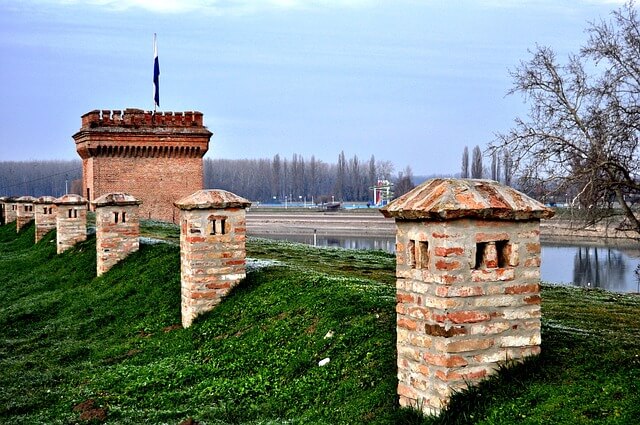
Osijek still bears scars from the war and aftermath: pockmarks dot the sides of structures, mortar blasts blemish sidewalks and poignant monuments have been constructed in remembrance. Many of the buildings on the oldest streets in the city have been neglected, evidenced by peeling paint and crumbling facades, as more pressing city projects have taken precedence. City center store spaces sit empty; the once prime real estate waiting for an opportunistic buyer to take interest.
Rather than feeling despondent, however, you can sense a subtle buzz of energy in the city. Forward-thinking and passionate residents are working towards bringing Osijek back to its former splendor. Throughout the city, historic buildings are getting facelifts, fresh-concept cafes and restaurants are breathing new life into once abandoned spaces and events are aimed at community involvement and participation.
Three great reasons to visit Osijek
If you still lack reasons to come and explore this scared but beautiful city; we are sure that the following list will be more than enough for you to change your mind. Here’s why Osijek will surely leave you breathless and wanting to come back!
City Sights
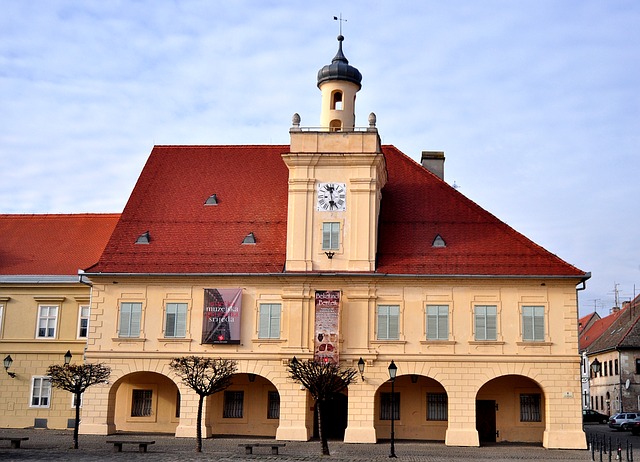
Given the city of Osijek’s long history, there’s a variety of sights. Walking around the city center, you will be amazed by the architecture, museums, historic buildings, city parks and monuments.
Museum of Slavonia – The museum was founded in 1877 and is the largest general-type museum in Croatia. Centrally located in the City Magistrate building, which was built in 1702, the interesting and informational museum displays tell the history of the city and region.
Museum of Archeology – Housed in the Main Guard Building adjacent to the Magistrate building, the museum exhibits artifacts from the area’s early history and the Middle Ages. The Museum of Archeology is part of the Museum of Slavonia.
Citadel or Fortress – Tvrda was built between 1693 and 1735 by the Habsburgs in the Baroque style. In addition to the eight bastions and two gates, city walls were constructed to protect the town from Ottoman threat. Today, most of the walls have been removed, but the Tvrda stands and the Old Town is still inhabited by thousands of residents and the former military buildings are occupied by the university and museums.
Co-Cathedral of St. Peter and St. Paul – Completed in 1898, the brick church features a 308-foot-tall spire, which makes it the tallest building in Croatia outside of Zagreb.
Municipal Park of Petar Kresimir IV – The city park was created at the beginning of the 20th century complete with trees and fountains – and remains a relaxing central green space today.
Kopački Rit Nature Park
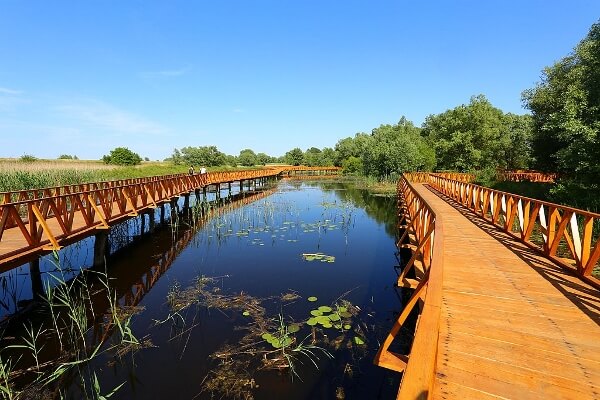
Covering 92-square miles of the Danube floodplain, Kopacki Rit Nature Park is the jewel of the Slavonia region. The wetlands are often referred to as the Amazon of Europe and more than 2,000 animals and insects call the park home – including more than 300 species of birds. On the protected land, deer roam the open space and the rivers are filled with fish.
Even in the winter, the park is a stunning sight. Morning frost clung to trees and ice froze at the edges of the lakes. In the winter, most of the swampland was dry, but you will ba able to see how high the waters rise in the springtime, marked by discolored bark and moss clinging to tree trunks. A true pearl worth a visit.
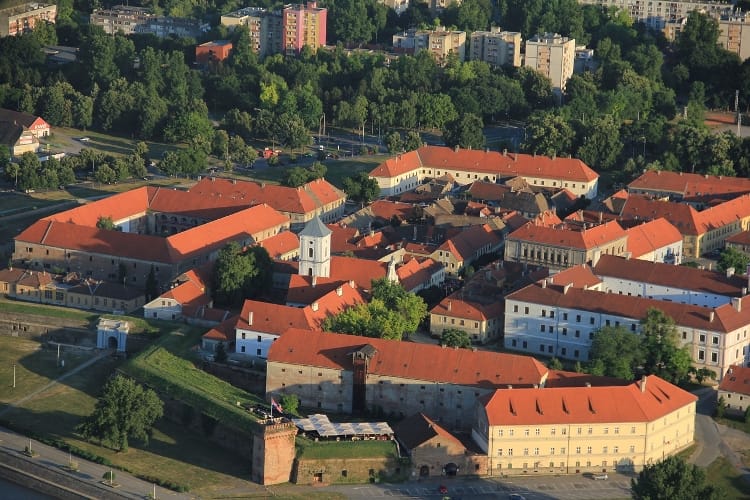
Gastronomy
Let’s get right to it: the food offering in Osijek is off the charts. From hearty soups to roasted game to cured meats and tasty pasta, the common ingredients are homemade and fresh. The regional specialty is River Fish Stew, which hardly sounds appetizing, but after one bite, it doesn’t matter what it is called…it is delicious. Paprika is used to flavor just about everything; the popular zingy spice is made locally from red peppers that are air-dried and ground into powder.
With wide open spaces, rushing rivers, and nutrient-rich soil, clean eating isn’t a trendy new concept, but a traditional way of life in Osijek. In more recent years, modern farming may have derailed that idea, but many local food producers are still intent on only promoting naturally-raised food, free from enhancements, chemicals, and preservatives; offering delicious characteristic meals made with fresh ingredients.
When mentioning food, we must not forget the wine. The region fo Slavonia prides on its winemaking, and for a good reason. Here you can taste some of the most delicious Croatian wine both red and white; which we are sure won’t leave you disappointed.
Not to be misguided, the 3 things mentioned above, are just the beginning. Osijek has a lot more amazing things to offer, it’s up to you to come and see it for yourself. Osijek will receive you with its arms wide open.
Booking.com
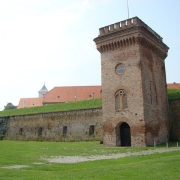
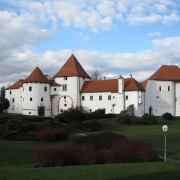 Photo by Ex13 / Licence: CC BY-SA 3.0
Photo by Ex13 / Licence: CC BY-SA 3.0 